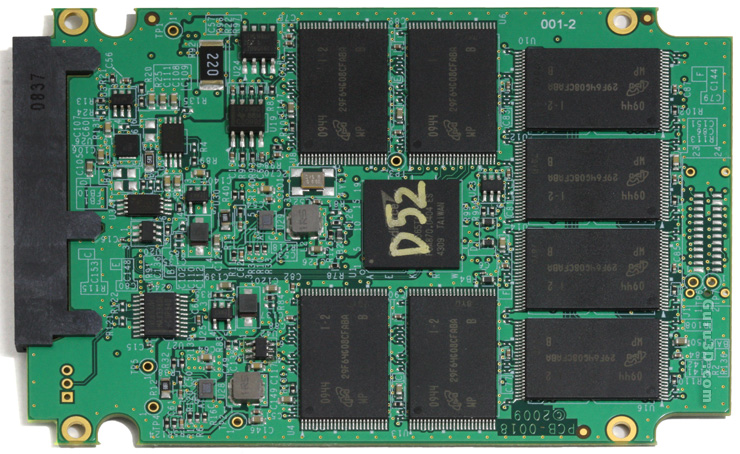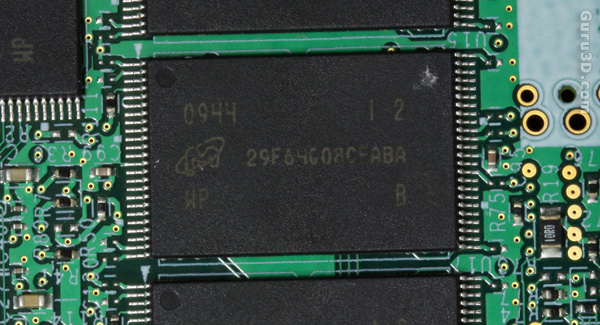OCZ Vertex 2 Pro Series SATA II 2.5" SSD
OCZ Vertex 2 Pro Series SATA II 2.5" SSD
In roughly a month, OCZ will put this product onto the market; we expect at the launch of CeBIT 2010 really.
The performance of the all new vertex 2 Pro SSD is rated at 280/270MB/Sec (Read/Write) with new file-sizes ! This SSD series will become available in somewhat unusual 50GB, 100GB and 200GB volume sizes.
Check out the features
- Available in 50GB, 100GB and 200GB capacities
- MLC NAND
- Seek Time: <.1ms
- Slim 2.5" Design
- 99.8 x 69.63 x 9.3mm
- Lightweight 77g
- Operating Temp: 0C ~ 70C
- Storage Temp: -45C ~ +85C
- Low Power Consumption: 2W operation, 0.5W standby
- Shock Resistant 1500G
- RAID Support
- MTBF 1.5 million hours
- 3-Year Warranty
Let's focus on some of the more important aspects and features of the drive, as there definitely are some things you guys needs to be aware of.
The Vertex 2 uses SandForce's latest version of the SF-1500 controller, which will be adopted by other players in the market as well, e.g. A-DAta as we have shown you at CES last week. The controller adds support for newer NAND memory types as in 34nm memory. For this specific SSD the memory comes from Micron and not Samsung. New 34nm NAND Flash memory is apparently cheaper to manufacture, thus cheaper for companies to implement, and for you as a consumer cheaper to purchase.
The read and write speed for the tested 100GB model are advertised at a blazing 280 MB/sec read and 270MB/sec write performance, which makes the product position itself in the extreme high-end SSD segment. Good performance probably at a price alright
Now typically we see the Indilinx Barefoot controller paired with 64MB of Elpida cache memory in the latest SSDs. SandForce however does not need that cache memory. Sandforce uses some sort of real-time data compression, saving on cache needs enabling it to write random I/O extremely fast. To manage all the multi-channel controller loving embedded into the controller we see a tiny processor inside the controller, and next to it a small memory cache, likely a couple of MB's, this figure has not been released to public though. So yeah, there is some cache memory .. yet it's inside the controller.
Why is that cache so important to that random I/O you ask. Well, history learned us the hard way that most budget SSDs have a JMicron controller with very little cache (8KB / 16KB), and the issue there is that if they need to write a lot of really small files simultaneously these drives started to choke up every now and then, your a-typical data bottleneck within a storage unit. Large data-caches solve that issue very well.
So a big help totally bypassing the small files issue for SSD drives is using a nice big mamma SDRAM buffer, or the approach that SandForce takes should be more than sufficient as well.

In the above photo we see the SSD. To the right we spot MLC flash NAND memory chips, the Vertex 2 is paired with Micron (MLC) flash memory chips. Included a count on the backside we spot 16 chips, each with a 6.25GB capacity for a total drive size of 100GB.
To the middle you can spot the SandForce SF1500 controller chip. Everything combined form the heart and soul of the SSD.

Micron MLC Flash NAND memories
 SF1500 controller - unfortunately marked
SF1500 controller - unfortunately marked
We have stated it many times and explained this quite a bit, but the seek time on SSD drives are insane; nothing short of amazing, at less than 1ms -- 0.1ms as we actually can measure. The average seek time for a traditional HDD is roughly 9ms. Do the math, hey, no more moving and spinning mechanical components are key here.
The traditional HDD is a limiting factor on the overall PC experience you guys. Also, storage performance like this would, for example, greatly enhance load times of Photoshop, Generic applications, Office, games and even simply stuff like browsing the web will become a much faster experience.
